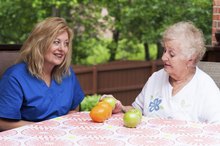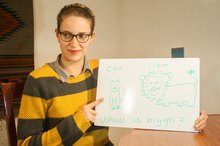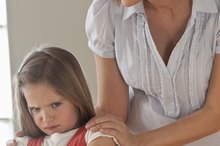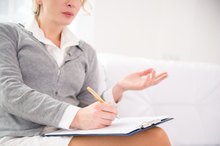Brain Exercises for Broca's Aphasia
Broca’s aphasia is a type of aphasia, a condition resulting from a brain injury to areas responsible for language. Broca’s aphasia results from damage to the frontal lobe from occurrences such as stroke, brain injury or brain tumor. A sufferer of Broca’s aphasia may understand completely the sentences of others. However, he may not be able to speak at all, or may speak in sentences that are hard to understand. This is because prepositions, pronouns and auxiliary verbs, such as "on," "have," "beside," "is" and "she" are often left out of speech. Though there are no medicines available for recovery from aphasia, you can assist a sufferer's treatment via certain exercises.
Accompanying Symptoms of Broca’s Aphasia
With Broca’s aphasia, sometimes called expressive aphasia, a sufferer may also be experiencing impairment in word-finding abilities and articulation. In addition, sentences may be short and incomplete and speech may be slow. While she is still able to understand the sentences and ideas of others, the understanding of complex material is compromised. Though these symptoms are not present in all sufferers of Broca’s aphasia, they do contribute to speech and language difficulties.
Opposites Exercise
Examples of Speech Goals for Traumatic Brain Injuries
Learn More
This exercise helps with repairing word-finding abilities and articulation, as well as expanding limited concepts. For this exercise, write down ten words, such as "up," "mad" and "bright." Then, ask for the opposite of the word. For instance, you would ask, “What is the opposite of up?” You would then reply with “down.” This exercise can increase in difficulty, with concepts increasing in complexity as the sufferer's tolerance strengthens. For instance, try “frustration” and “joy.”
Preposition Exercise
This exercise uses two spoons and a box, and helps firm the concept of prepositions. To start, place the box on a surface and place both spoons anywhere relative to the box, such as on the box and beside it. These spoons would not be in the same location. Then ask, “Which spoon is on the box?” He would then reply by picking up or pointing at the spoon. You can increase the difficulty by using multiple spoons.
Therapy
Aphasia Speech Therapy Activities
Learn More
In addition to exercises, the sufferer’s physician may recommend or require speech therapy. Speech therapy is the prime method of treatment for aphasia and is initiated as soon her condition allows, says the Penn State College of Medicine. Speech therapy will strengthen existing language skills and find ways for her to compensate for the language skills lost. Treatment may involve exercises of the facial muscles, repetition of words, reading or writing exercises in workbooks or flash cards with images for memory improvement. Though it usually takes around two years, therapy can usually result in partial to full recovery. However, this is contingent upon severity and cause of injury, age and overall health.
Support and Broca’s Aphasia
Like exercise and therapy, a sufferer’s family and friends are a key element in recovery, providing support, understanding and help. However, certain guidelines are crucial in providing the most beneficial support possible. You, as a supporter, are encouraged to avoid correcting his speech, allow him time to speak, maintain a conversation manner appropriate for an adult, ask for and appreciate his opinions and include him in conversations with others. You should also encourage him to converse in any manner comfortable to him and to seek social support through groups or organizations.
Related Articles
References
Writer Bio
Sarah Thompson has been a writer since 2006. She has contributed to Ohio-based publications such as "CityScene" and "Dublin Life" magazines, as well as Columbus' top alternative weekly, "The Other Paper." Thompson has also written for several online outlets, including Smashing Magazine and Web Designer Depot. She holds a Bachelor of Arts in journalism, sexuality studies and visual communication design from Ohio State University.









